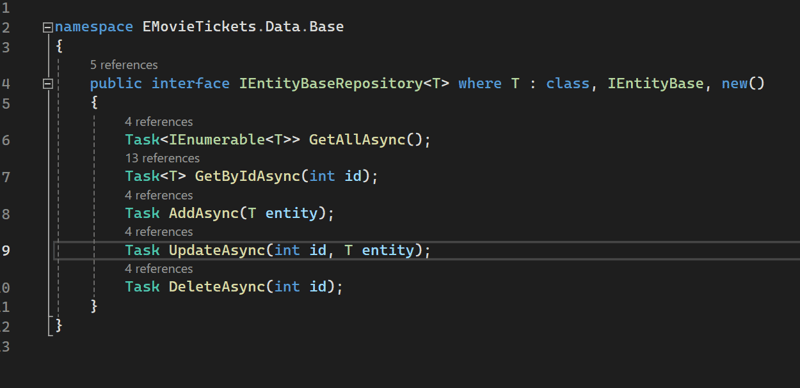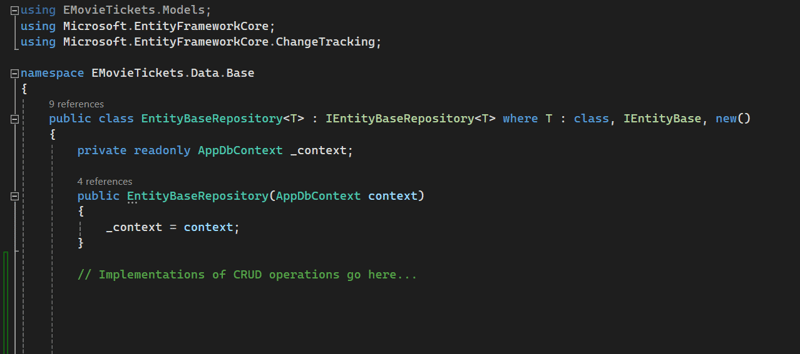
sabarivelanganesan
Posted on February 14, 2024
Introduction:
In the realm of software development, managing data is a fundamental task. Whether it's retrieving user information, updating product details, or deleting records, the need for efficient CRUD (Create, Read, Update, Delete) operations is ubiquitous. Traditionally, developers would implement these operations individually for each entity, leading to repetitive code and potential maintenance headaches. However, with the power of generics in C#, we can streamline this process and achieve greater consistency and maintainability in our codebase.
Understanding the Problem:
Consider a scenario where you're building an application that deals with multiple entities. Each entities requires similar CRUD operations: fetching all records, retrieving a specific record by its identifier, adding a new record, updating an existing record, and deleting a record. Implementing these operations separately for each entity not only increases code redundancy but also makes it harder to maintain consistency across the application.
Generic Solution
To address these challenges, we can leverage the power of generics in C# to create a reusable solution. In the code below IEntityBaseRepository, is a generic interface that provides a standardized way to perform CRUD operations on any entity within our application.
This interface introduces methods for fetching all records, retrieving a specific record by its identifier, adding a new record, updating an existing record, and deleting a record. The T in IEntityBaseRepository represents the entity type that will be operated upon. To ensure type safety and consistency, T must implement the IEntityBase interface and have a parameterless constructor.
Implementing the Generic Interface:
With the interface defined, we can now create a concrete implementation of the repository. EntityBaseRepository provides default implementations for the CRUD operations defined in IEntityBaseRepository, making it easy to reuse across different entities in our application.
This repository class utilizes Entity Framework Core to interact with the underlying database. It provides asynchronous methods for adding, updating, and deleting entities, ensuring optimal performance and scalability.
Customizing for Specific Entities:
While EntityBaseRepository offers generic implementations for CRUD operations, you may encounter scenarios where certain entities require custom behavior. In such cases, you can derive specialized repository classes from EntityBaseRepository and override the relevant methods as needed. For example:
Conclusion:
In conclusion, IEntityBaseRepository and EntityBaseRepository provide a powerful foundation for managing CRUD operations in C# applications. By embracing generics and adhering to best practices, we can achieve greater consistency, maintainability, and efficiency in our codebase. Whether you're working with actors, movies, or any other entity, this approach simplifies data operations and accelerates development. Give it a try in your next project and experience the benefits firsthand!

Posted on February 14, 2024
Join Our Newsletter. No Spam, Only the good stuff.
Sign up to receive the latest update from our blog.


